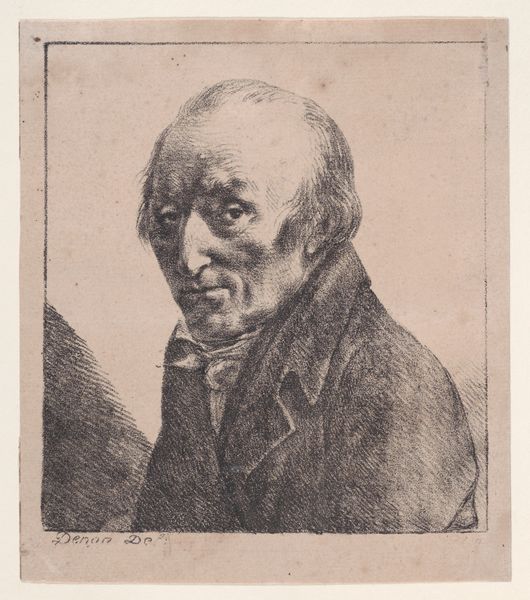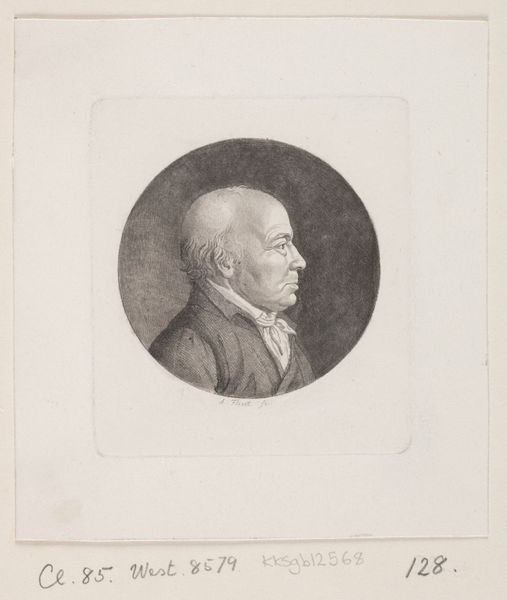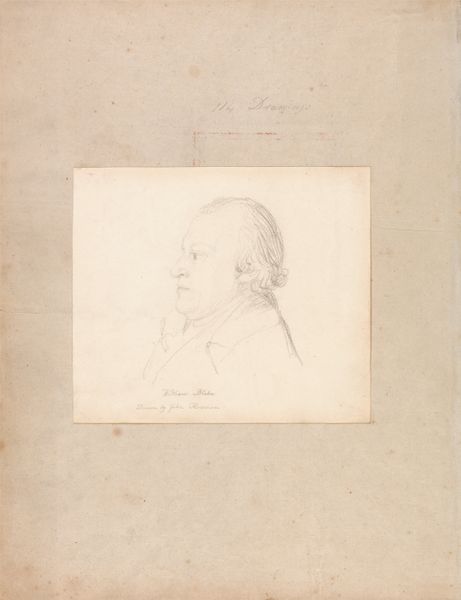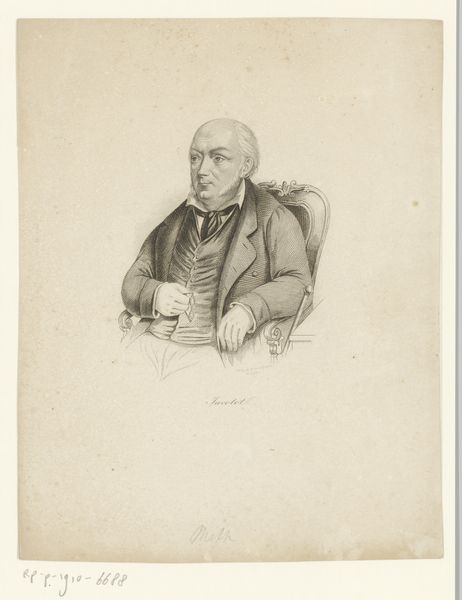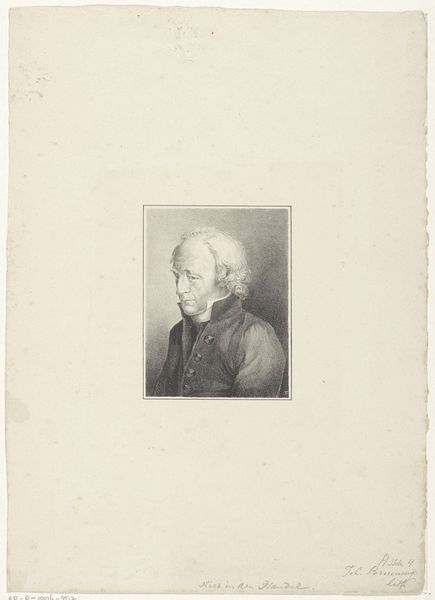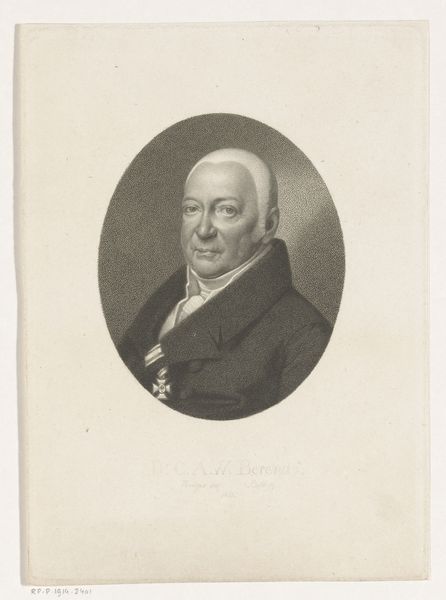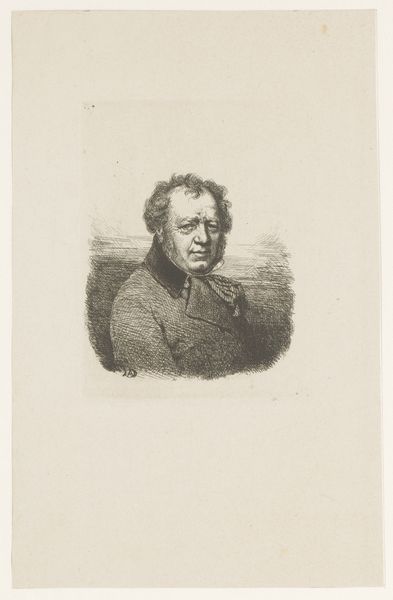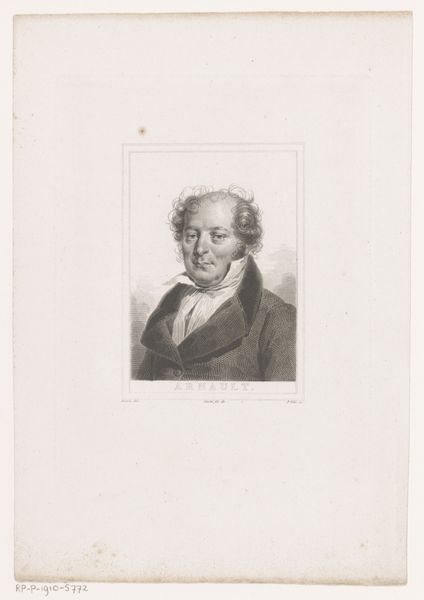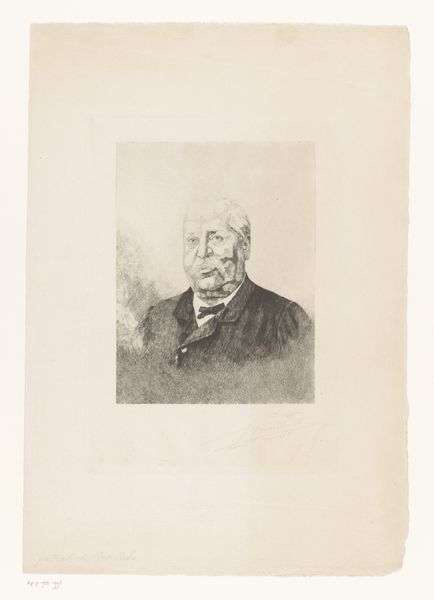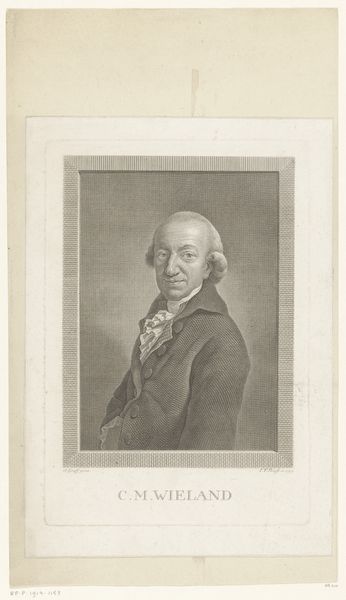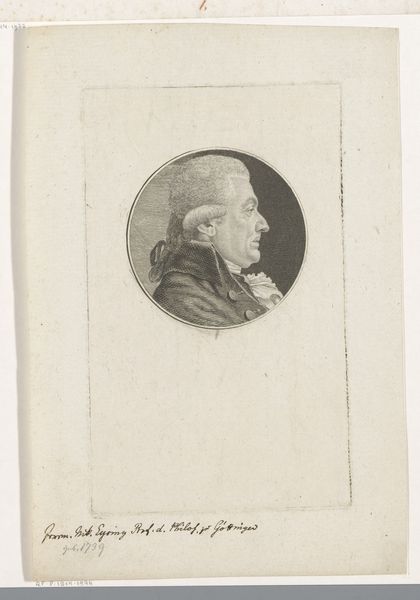
Portrait of the Comte de Lacépède 1747 - 1825
0:00
0:00
drawing, print, pencil, graphite
#
portrait
#
pencil drawn
#
drawing
#
neoclacissism
# print
#
pencil sketch
#
classical-realism
#
pencil drawing
#
pencil
#
graphite
Dimensions: Sheet: 11 15/16 in. × 9 in. (30.3 × 22.9 cm)
Copyright: Public Domain
Curator: Here we have a portrait of the Comte de Lacépède, dating between 1747 and 1825, by Baron Dominique Vivant Denon. It’s currently held in the collection of the Metropolitan Museum of Art. Editor: It's striking. A simple, yet deeply expressive portrait, rendered in graphite perhaps? The gaze is quite intense, almost unnerving. Curator: The material certainly informs the mood. As a graphite drawing, likely intended for reproduction as a print, it suggests a certain accessibility and dissemination of knowledge befitting the Comte's role as a naturalist and Freemason. This isn't some inaccessible oil painting intended solely for private viewing. Editor: Precisely! I was going to mention how the linear precision contributes to its realist quality but there's also a starkness here—almost clinical, despite the Neoclassical influence. Observe the subtle tonal variations, and the hatching technique. The composition leads our eye directly to his face and intellect. Curator: I find the starkness speaks to a broader shift in representation at the time. The late 18th-century valued rationalism, scientific observation. The portrait, though undeniably honouring Lacépède as an individual, simultaneously reflects the values of his social role. It reflects the enlightenment’s influence on art production and reception. The rise of printmaking also served a demand for enlightenment thought! Editor: Indeed. I'm curious about the original purpose. Was it a study for a larger work? It does have an unfinished feel. Curator: That’s very possible. I find myself more interested in how it circulates as an object within a network of power and exchange. These depictions of influential people played a vital role. This helped visualize the leaders of the intellectual world in the everyday spaces that circulated drawings and prints, reinforcing their ideas. Editor: A convincing claim. I’m equally compelled by the formal execution – that almost palpable sense of character, shaped by the material handling. Ultimately the aesthetic success relies on both, perhaps more intertwined than we allow at first sight. Curator: A welcome meeting of the minds on that point. It seems we’ve reached an insightful, albeit inconclusive ending point here!
Comments
No comments
Be the first to comment and join the conversation on the ultimate creative platform.
